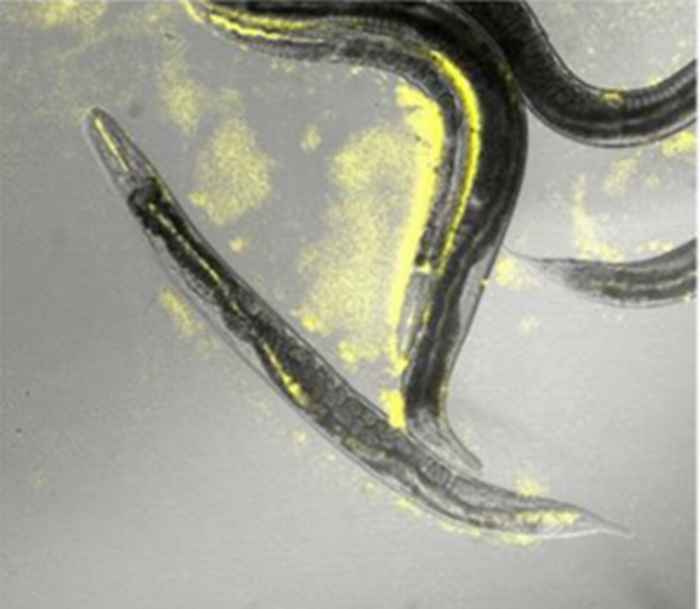Symbiosis
Almost all eukaryotic hosts harbor highly diverse microbial communities, and in many species, the symbiotic relationship between hosts and their microbiome is critical for healthy hosts. Experimental evolution offers a unique approach to follow (co)evolutionary dynamics of hosts and their symbionts under controlled laboratory conditions. At EPB, we adopt two experimental systems to elucidate the role of the microbiome in host performance. First, we study how the microbiome can enhance C. elegans performance under novel environments over evolutionary timescales. Second, we unravel the role of the microbiome in shaping responses to disease in Daphnia magna.

Symbiotic relationships are not restricted to eukaryotic hosts and their microbes. At EPB, we also study a large and diverse group of recently discovered symbionts belonging to the Archaea: a major but poorly investigated domain of life. Specifically, we investigate the role of archaeal symbionts in evolution and ecosystem functioning, using a variety of methodological approaches ranging from omics techniques to microscopy, cultivation, genetics and experimental evolution. With these methods, we aim to a) reconstruct early evolution and biodiversification with a focus on the role of microbial symbiosis in cellular evolution, b) assess the impact of novel archaeal symbionts on hosts in natural marine environments, and c) cultivate archaeal symbionts and study their evolution and cell biology and the molecular basis of symbiont-host interactions.
The origin and persistence of host-symbiont associations remains an evolutionary puzzle, due to for instance complex patterns of inheritance and contrasting selection pressures. This challenges the use of traditional ecological and evolutionary theory. At EPB, we are finding ways to incorporate the microbiome into existing evolutionary theory and use experimental systems to inform and validate our models.
The effects of symbioses can extend to entire communities, with potential large effects of ecosystem functioning. We study how host-parasite interactions can propagate to the community level and drive coevolutionary Red-Queen dynamics, using a combination of theoretical modelling and data on interactions between plants and mycorrhizal fungi.